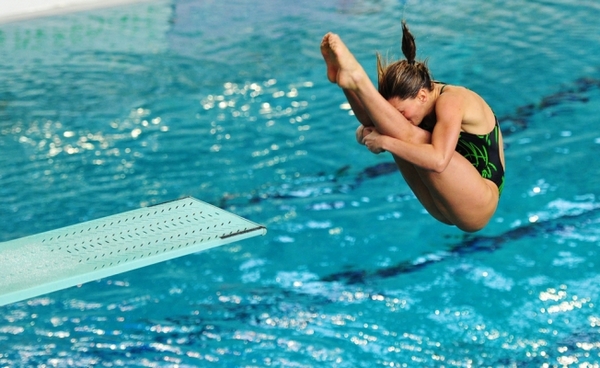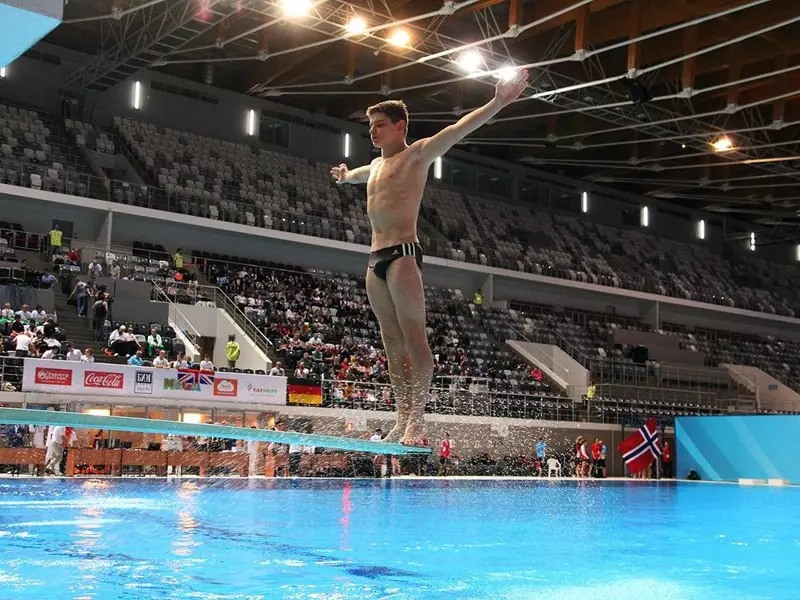There are competitions, the essence of which is to perform a variety of acrobatic tricks in jumping from a springboard or tower into the pool. One of the most spectacular sports is t – diving. Judges evaluate both the cleanliness of entry into the water surface and the quality of the performance of acrobatic elements.
Sport diving
Ski jumping was recognized as an Olympic sport at the beginning of the previous century. For the first time competitions in this discipline were held in 1904, in St. Louis.
At first, only men took part in the competition, later representatives of the beautiful half of humanity also entered the fight for medals. Jumping into the water from a great height only seems to be a simple sport, this competition requires an impressive strength and professional training from the participant.

History of diving
For the first time, people started talking about diving as a sport in the 19th century, before that, many residents of coastal cities dived from cliffs, rocks, ships into the depths of the sea. Switzerland became the ancestor of the first school in the history of diving from a height, where a tower was used as the main projectile.
Later, German coaches began to use a springboard, such jumps are considered more difficult to perform, they require a strong tension of the entire body of the athlete. American jumpers were able to combine both schools, and learned to jump without splashing and with a high reach.
Types of diving
Complicated coordination sports, which include diving from a tower, develop the muscular system, coordination, and endurance. By type of jumping from a height are different, they distinguish:
Applied jumps are performed by specialists in view of the need for the type of activity, divers, military, rescuers do this. Such a dive is performed upside down or head down – the type of jump is selected individually in each specific situation.
Diving training is the initial stage in the training of future athletes. Learning the technique of repulsion and honing the skills of entering the pool are practiced during such exercises. Drops and dismounts are the most common types of training jumps.
Sports jumping is part of the Olympic Games and other major competitions. All types of such jumps have their own level of difficulty, they are performed standing in front of or with their backs to the pool. Acrobatic stunts are allowed, in which the athlete’s body twists forward or backward, simultaneous rotation around the axis in a spiral (screw) is allowed
Jumps are performed from a run or from a place. Performed from a platform rather than a springboard, some diving sports have an initial handstand. Demonstration jumps are made to demonstrate skills.
Diving rules
It is pleasant to watch the professional actions of athletes at competitions from the outside. Among popular sports, diving is considered the most spectacular competition. The rules that both judges and participants adhere to have not changed for several decades.
The equipment from which the jump is carried out – a springboard or a tower, must comply with the technical specifications.
The dimensions of the pool where the athlete jumps are strictly defined by the rules.
The composition of the water in the diving pool is checked by a special commission.
Divers’ clothing is different from swimming suits.
The division of the participants of the competition occurs both by gender and by age categories.
Diving tower
A special platform from which athletes jump into the water – a tower, has the form of a reinforced concrete structure with a coating that prevents slipping. To hold international competitions, the tower must meet certain requirements.
- The height of the diving tower is 5, 7.5 and 10 m.
- The distance of the platform edge from the pool wall should be at least 1.5 m.
- The tower must have steps and handrails.
